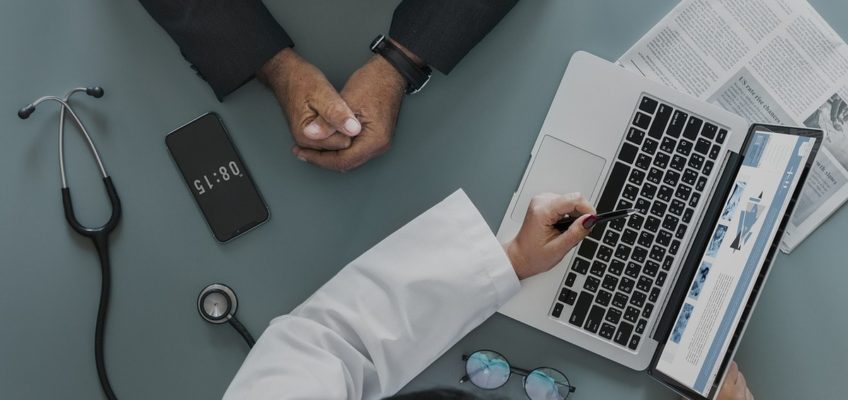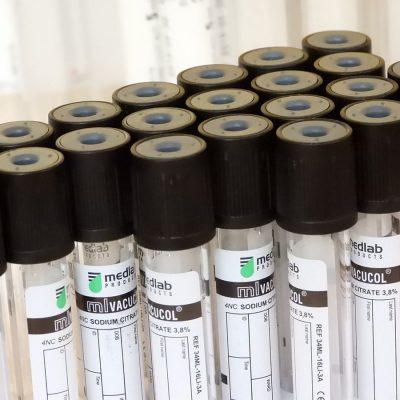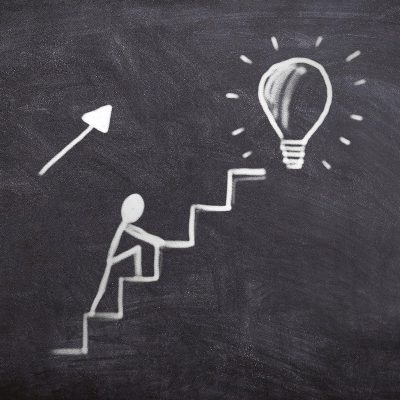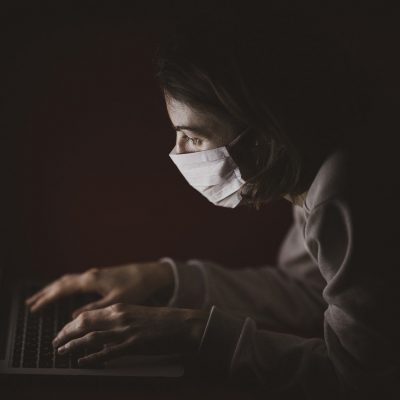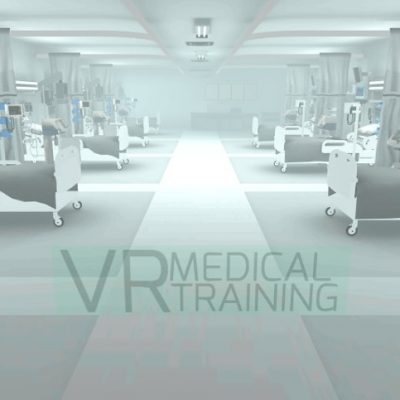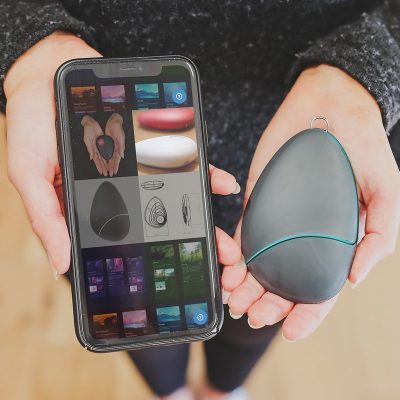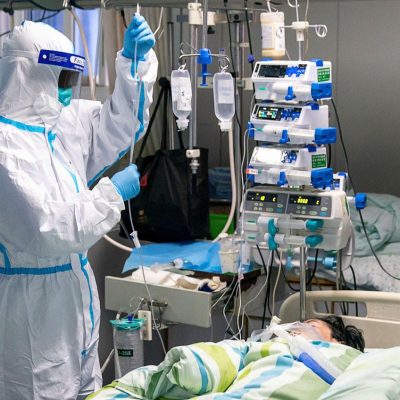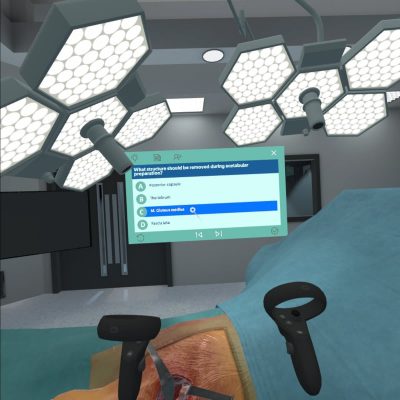Virtual Reality Enhances Patient Education and Effective Communication in Healthcare
Every healthcare system must have well trained medical professionals who have competence and expertise in their chosen field. However, what sets a successful healthcare system apart from the rest is effective communication. Communication between healthcare professional (especially frontline staff, such as nurses) and patients is a major predictor of the quality of the healthcare system. Effective communication is also the most important predictor of patient satisfaction.
Effective communication is complex and challenging in healthcare because in many cases a deep understanding of a challenge facing a patient would require the patient to have a strong medical background. This is rare. Instead, the goal for the healthcare professional is to give the patient enough information that they understand the basics, know what to expect, but most importantly provide that information in a way that builds a deep trust between the patient and the healthcare professional. It is this trust that builds confidence in patients and reduces anxiety and stress.
Effective communication is complex and challenging in healthcare because in many cases a deep understanding of a challenge facing a patient would require the patient to have a strong medical background Click To TweetTrust develops when information is presented to patients in a way that they can understand and is communicated with genuine feeling and affect. As we will see shortly, people gain their best understanding through experience. Whether educating a patient about an upcoming medical procedure or training them on the use of a medical device (e.g., colostomy bag or peritoneal dialysis machine), the more they experience, the better. Thus, communicating information to patients should, as much as possible, be through experience. In addition, patients develop trust in healthcare providers who have the people skills associated with effective communication. These include empathy, compassion, and a genuine shared understanding and experience. It is the subtleties and nuances in body language and emotional tone of verbal utterances that are the difference between communicating information and communicating trust and genuine care.
In this report, I review the psychology and neuroscience of learning and show that virtual reality (VR) has the potential to enhance the effectiveness of communication in two ways. First, because VR is grounded in experiential learning, it can be used to effectively communicate information to patients about an upcoming medical procedure, or the use of a new medical device by having them experience it first-hand in VR. Second, VR can be used to train the people skills of effective communication in healthcare professionals. This requires training at an emotional and behavioural level, not just at a cognitive level. It is one thing to know what to do to communicate effectively, but it is another (and mediated by a completely different set of brain structures) to know how to communicate effectively and how to express genuine care for another. Effective verbal and more importantly non-verbal communication is facilitated by immersive experiences that are rich in context and emotion and allow one to “walk a mile in someone else’s shoes” while experiencing effective and ineffective communication scenarios.
A healthcare professional might be available to answer specific questions, but the majority of the “communication” is between the text and the patient, with all the onus on the patient Click To TweetThe traditional approach to communicating information to patients is to provide them with documents that outline the various pre-operative, perioperative and post-operative instructions, procedures and risks, or documents that provide step-by-step instructions on how to use a new medical device. A healthcare professional might be available to answer specific questions, but the majority of the “communication” is between the text and the patient, with all the onus on the patient. The psychology and neuroscience of learning make clear that this is a sub-optimal, and error-prone approach because it relies exclusively on the patients cognitive processing systems to translate the 2d abstract text into a mental representation of the relevant medical procedures, or steps to follow with a medical device. The cognitive system is limited by working memory and attention load, both of which are adversely affected by stress, and by normal ageing. Thus, the patient is left with a poor understanding of the upcoming medical procedure, or the ins and outs of using a new medical device. Very little stress and anxiety are relieved, and the patient feels dissatisfied.
The patient is left with a poor understanding of the upcoming medical procedure, or the ins and outs of using a new medical device Click To TweetAlthough the people skills of effective communication are extremely important, surprisingly, healthcare professionals rarely get much formal training. They might get training on what effective communication entails, but rarely get training on how to evidence effective communication and the people skills that are required. For a first-hand description from a nurse’s perspective follow this link. In some case, role play and simulation are used to build the people skills of effective communication, but this approach is time-intensive, cost-intensive, and not scalable.
To understand how to best educate patients about some upcoming medical procedure, or a new medical device that they will be using we need to understand how patients’ brains learn. To understand how to train the people skills of effective communication in healthcare professionals we need to understand how healthcare professionals’ brains learn. Thus, we must understand the psychology and neuroscience of learning.
“Learning is an experience. Everything else is just information”
Albert Einstein
This is an insightful quote that neatly sums up what we know about the neuroscience of learning. The human brain is comprised of at least four distinct learning systems (see figure below). As Einstein so eloquently stated, experience is at the heart of learning. The experiential system has evolved to represent the sensory aspects of an experience, whether visual, auditory, tactile or olfactory. Every experience is unique, adds rich context to the learning and is immersive. The critical brain regions associated with experiential learning are the occipital lobes (sight), temporal lobes (sound), and parietal lobes (touch/smell).
The critical brain regions associated with experiential learning are the occipital lobes (sight), temporal lobes (sound), and parietal lobes (touch/smell) Click To TweetExperiential learning is especially important when it comes to communicating the details of an upcoming medical procedure or the use of a new medical device. There is no better way to communicate this information than to have the patient visit the hospital and talk to former patients, or to observe someone using a medical device. Experiential learning is also important when training the people skills of effective communication. One of the best ways to understand the (often subtle) difference between showing genuine care, empathy and compassion for another and showing indifference is to experience both and to experience others reactions to each.
The cognitive system is the information system. It processes and stores knowledge and facts using working memory and attention. Critically, these are limited resources and form a bottleneck that slows learning with more information coming in and available to the learner (the green arrows) than can be processed (the red arrow). This system encompasses the prefrontal cortex and hippocampus. Cognitive processing of information is the “everything else” aspect of learning that Einstein alluded to. This is not to say that information is not important, it is. Rather information is best learned and retained when it is accompanied by rich experience.
Cognitive processing of information is the “everything else” aspect of learning that Einstein alluded to Click To Tweet
The behavioural system in the brain has evolved to learn motor skills. This is the system that builds the “muscle memory” that drives the verbal and non-verbal people skills of effective communication. The detailed processing characteristics of this system are beyond the scope of this report. Suffice it to say that the critical brain structure for behavioural learning is the striatum, and processing in the striatum is optimized when behaviour is interactive and is followed in real-time (literally within milliseconds) by corrective feedback. Behaviors that are rewarded will be more likely to occur again, whereas behaviors that are punished will be less likely to occur again. This system links rich experiential contexts (represented by the experiential learning system) and emotions with the appropriate behavioural responses.
The emotional learning system is critical to patient education and in training the people skills of effective communication. Allowing patients to visit the clinic or hospital, and to be able to experience the preoperative, perioperative, and post-discharge steps that they will follow reduces uncertainty, anxiety and stress. In a sense, this patient experience will elicit some of the emotions that they may experience later, increasing familiarity and understanding when they receive their medical treatment at a later date. More than anything, it is the emotional learning system in the brain that will help build the interpersonal understanding, awareness, and sensitivity that are at the heart of the people skills of effective communication. The critical brain regions are the amygdala and other limbic structures. The detailed processing characteristics of this system are less well understood than the cognitive and behavioural skills learning systems, but emotional learning, when combined with context-rich experiences, builds rich repertoires of interpersonal understanding and behaviour.
More than anything, it is the emotional learning system in the brain that will help build the interpersonal understanding, awareness, and sensitivity that are at the heart of the people skills of effective communication Click To TweetTraditional approaches to patient education that rely almost exclusively on text are sub-optimal and focus exclusively on cognitive processing. This leaves patients uncertain, anxious and stressed about upcoming medical procedures, and it leaves patients poorly equipped to care and maintain medical devices that are vital to their care
Now consider a VR approach to patient education. As a patient, you can don a VR headset and follow the journey of a fellow patient during their pre-operative, perioperative, and post-operative phase. They might walk you through the necessary changes in diet and exercise prior to the operation. Both of you might then follow as a nurse gives you both a virtual tour of the hospital setting. You see the preparation room, the surgical room, and the recovery room with all of the gadgets including your trusty call button. Finally, you might spend some time with your fellow patient while they recover at home, and assure you that they are on the road to recovery.
Now consider a VR approach to patient education. As a patient, you can don a VR headset and follow the journey of a fellow patient during their pre-operative, perioperative, and post-operative phase Click To TweetAnalogously, VR is ideal for familiarizing patients with a new medical device. Using an in-home peritoneal dialysis machine as an example, suppose the patient dons a VR headset and is immersed in a 360 experience with an expert who has used a peritoneal dialysis machine for years. The patient can watch as the expert demonstrates and verbally describes the step-by-step procedures needed to care and maintain the dialysis machine. The patient can view this from a third-person perspective, but also from the first-person perspective. The expert can demonstrate common pitfalls and how to address them while describing them verbally. The expert can do all of this while demonstrating a calm demeanour. The patient can view the VR experience and can complete knowledge checks at the end to ensure that they have the requisite knowledge. They can view the experience as many times as they like until they are confident in their own skills.
With this VR approach to patient education you “learn through experience”. You engage your emotion centres, all while obtaining useful information and learning what you need to do. With VR you broadly engage multiple learning and memory systems in the brain in synchrony. This builds context-rich, and highly interconnected memory traces that leave the patient feeling confident in the medical procedure to come and in their understanding of a medical device that they will be using.
With VR you broadly engage multiple learning and memory systems in the brain in synchrony Click To TweetTraining the people skills of effective communication in healthcare professionals is often left to chance. If lucky, healthcare professionals obtain some experience with role play and simulation.
Now consider a VR approach to training healthcare professionals on the people skills of effective communication. First, it would be advantageous for the healthcare professional to go through the same VR experience that the patient did. When effective virtual reality education and training of healthcare professionals is combined with virtual reality training for patients, a shared experience between patient and professional emerges. This alone will enhance the quality of communication between patient and healthcare professionals and will reduce the stress that patients feel while enhancing patient satisfaction. This will also increase the confidence and engagement in healthcare professionals.
When effective virtual reality education and training of healthcare professionals is combined with virtual reality training for patients, a shared experience between patient and professional emerges Click To TweetSecond, imagine having a healthcare professional don a VR headset where they are transported into the body of a patient who is being lectured to by an indifferent healthcare professional about an upcoming procedure or new medical device. From the patient’s perspective, the healthcare professional is talking too quickly and is using too much jargon. The patient is feeling anxious and stressed and is trying to express this to the healthcare professional, but they appear not to be listening. Next, the healthcare professional is transported into a new situation with a different healthcare professional. They are explaining the exact same procedure, but are making eye contact with the patient, are talking slowly and methodically. They periodically ask the patient if they have any questions and state with genuine empathy that they understand the patient’s anxiety and stress, but they want the patient to know that they will be there for the patient. These “walk a mile in my shoes” experiences are visceral for the healthcare professional. They engage emotional and experiential learning centres in the brain and quickly demonstrate the appropriate people skills behaviours.
These “walk a mile in my shoes” experiences are visceral for the healthcare professional Click To TweetNumerous other VR experiences can be created and can be used for training. For example, a healthcare professional in training might be transported into the middle of a busy emergency room and shadow a seasoned professional explaining a patient’s condition to their distraught spouse, or they might be transported int the body of a patient coming out of anaesthesia following surgery. In both situations, they could experience the skills associated with effective and ineffective communication. Healthcare professionals can feel the emotions and experience the reactions associated with these realistic experiences that they are a part of. Critically, these VR experiences can be repeated and new more subtle experiences can be developed. Multiple vantage points can be experienced, whether patient, family member, or healthcare professional.
VR has the potential to revolutionize the quality of patient education and to help healthcare professionals hone the people skills of effective communication Click To TweetVR has the potential to revolutionize the quality of patient education and to help healthcare professionals hone the people skills of effective communication. Effective patient education and communication are what sets successful healthcare systems apart from the rest. It reduces patients’ stress, anxiety and uncertainty, enhances patient satisfaction, and increases healthcare professionals’ confidence.
For companies looking to get into Immersive technologies such as VR/AR/MR/XR our Virtual Reality Consultancy services offer guidance and support on how best to incorporate these into your brand strategy.
Todd Maddox is Science, Sports and Training Correspondent at Tech Trends, and the CEO of Cognitive Design and Statistical Consulting. Follow him on Twitter @wtoddmaddox

